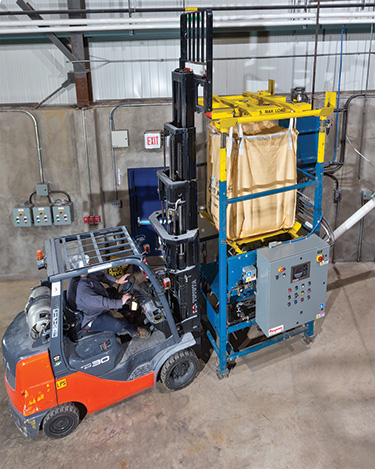 Click to enlarge
Click to enlargeA lifting frame with bulk bag suspended, is forklifted into cradle cups at the tops of POP-TOP™ extension arms.
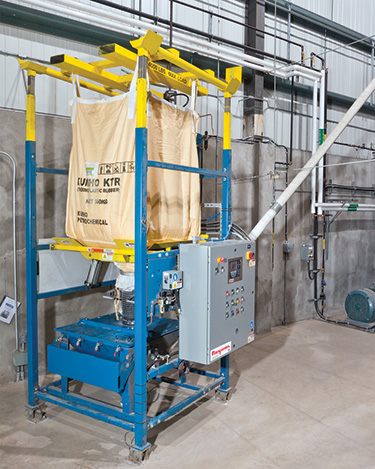 Click to enlarge
Click to enlargeThe system controller receives loss-of-weight information from load cells supporting the discharger frame, and stops the flexible screw conveyor once the target batch weight has been lost.
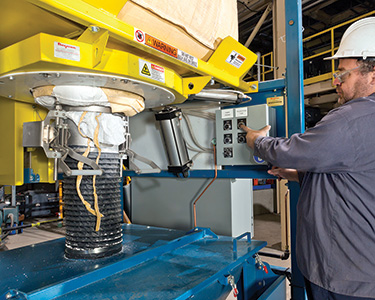 Click to enlarge
Click to enlargeAt the bag spout interface, a POWER-CINCHER® flow control valve regulates flow, while a SPOUT-LOCK® clamp ring and TELE-TUBE® telescoping tube promote complete, dust-free discharge.
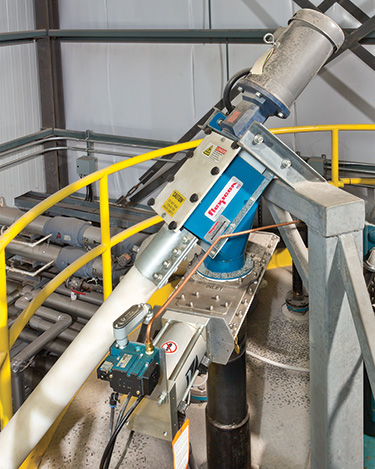 Click to enlarge
Click to enlargeAt the (blue) conveyor discharge, material exits prior to the point at which the flexible screw connects to gear reducer, preventing material contact with seals.
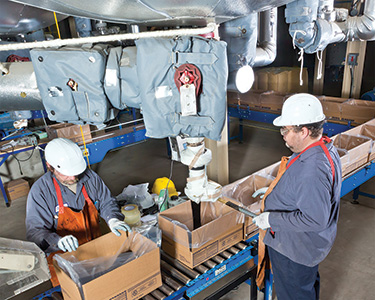 Click to enlarge
Click to enlargeAfter mixing, bags of hot melt are packaged for shipment.


 Click to enlarge
Click to enlarge Click to enlarge
Click to enlarge Click to enlarge
Click to enlarge Click to enlarge
Click to enlarge Click to enlarge
Click to enlarge